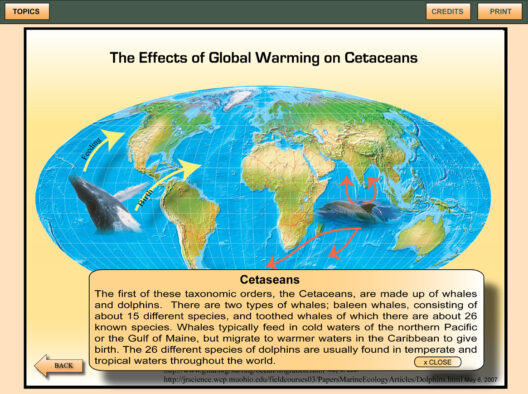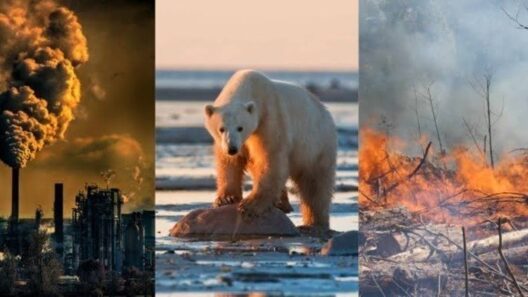The planet we inhabit is a sprawling chemical laboratory, where the ingredients of our atmosphere react with one another, producing both sublime beauty and perilous consequences. The equation governing our climate is not merely arithmetic; it is a complex interplay of elements that shapes the Earth’s delicate equilibrium. As the heat of the sun bathes the planet, it incites a cascade of chemical reactions crucial for sustaining life yet simultaneously threatening it. Understanding this climate’s chemical equation is vital in grasping the peril of global warming and its far-reaching implications.
To unravel the complexities of Earth’s atmospheric reactions, one must first revisit the rudimentary principles of chemistry. The atmosphere is primarily composed of nitrogen (approximately 78%), oxygen (around 21%), and trace amounts of other gases, including carbon dioxide (CO2), methane (CH4), and nitrous oxide (N2O). Despite their lesser concentrations, these greenhouse gases play a monumental role in the climate system, functioning as a thermal blanket that traps heat. This nature of greenhouse gases has not changed; rather, their concentrations have dramatically increased due to human activities, predominantly the combustion of fossil fuels and deforestation.
Consider the metaphor of a garden. A greenhouse is an environment where plants thrive, sheltered from the harshness of external climates. However, if that greenhouse is overstuffed with materials—such as excessive carbon emissions—it can lead to an inhospitable environment, creating conditions that are not conducive to growth. Our Earth operates on similar principles, where excessive greenhouse gases create a sweltering greenhouse effect that disrupts climatic harmony. In this context, the rising average temperatures act as the garden’s ever-increasing internal heat, nurturing some aspects while hindering others essential for survival.
At the heart of the climate’s chemical equation lies the carbon cycle—a cyclical pattern of carbon that traverses the atmosphere, the biosphere, and the geosphere. Carbon is an elemental chameleon, capable of morphing through various forms, such as carbon dioxide during photosynthesis in plants or carbonates in oceans. This intricate cycle depends on equilibrium, which has been disrupted through anthropogenic interference. Human emissions of carbon dioxide and methane significantly outweigh natural absorption processes, leading to an inexorable accumulation of these gases.
The ramifications of this elevated concentration are far-reaching and alarming. As the atmosphere warms, feedback loops emerge, exacerbating the situation. For instance, melting polar ice caps reduce albedo—the ability of surfaces to reflect sunlight—leading to higher absorption of heat, subsequently amplifying warming trends. Furthermore, warmer temperatures lead to increased evaporation rates, intensifying humidity and occasionally spawning ferocious storms. Such phenomena illustrate the cascading effects that arise from manipulating our climate’s chemical equation.
Delving deeper into this equation, one cannot overlook the role of the oceans. The oceans act as the planet’s primary carbon sink, absorbing roughly 30% of the carbon dioxide emitted by human activities. While this natural process helps mitigate immediate warming, it comes at a cost. Ocean acidification is a byproduct of this absorption, which disrupts marine ecosystems and endangers coral reefs—vibrant underwater metropolises that support diverse species. The carbonate ions essential for forming coral structures become scarce as acidity levels rise. Thus, our oceans transform from carbon reservoirs to vulnerable entities struggling to cope with the very gases we produce.
Moreover, the unfolding narrative of climate change is not merely scientific; it poses a profound ethical challenge. The disproportionate impact of climate change on marginalized communities evokes questions of justice. Developing nations, often the least responsible for global emissions, face the brunt of climate-related adversities, from rising sea levels to intensified droughts. Therefore, the chemical equation of our climate transcends mere calculations; it encapsulates the intricate weave of our global society, challenging us to rethink our roles and responsibilities.
Addressing the conundrums posed by climate change necessitates a multifaceted approach. Innovations in renewable energy sources—such as solar, wind, and geothermal—provide pathways to mitigate emissions. Transitioning to a low-carbon economy not only curtails greenhouse gas emissions but invigorates economic growth through the creation of sustainable jobs. Yet transitioning requires collective will and an understanding that climatic health is inexorably linked to the health of our planet’s ecosystems and ultimately, to humanity’s future.
Moreover, reforestation and afforestation initiatives serve as vital interventions. Forests function as natural carbon sinks, sequestering carbon dioxide while providing habitat for countless species. Sometimes referred to as ‘the lungs of the Earth,’ trees breathe in carbon dioxide and breathe out oxygen, a poetic representation of nature’s balanced chemical equation. By investing in green infrastructures, we foster biodiversity and enhance our planet’s resilience against climate adversities.
In conclusion, the chemical equation of climate change is a reflection of intricate relationships and reactions, fundamentally altered by human actions. As stewards of the Earth, we stand at a crossroads, faced with the pressing imperative to recalibrate our actions and mend this equation. The appeal lies not only in the intricate science but also in the shared responsibility to ensure that our planet remains thriving and hospitable for generations to come. The chemical equations that govern our climate are not just abstract concepts; they represent the reality we must face and the legacy we will leave behind.







